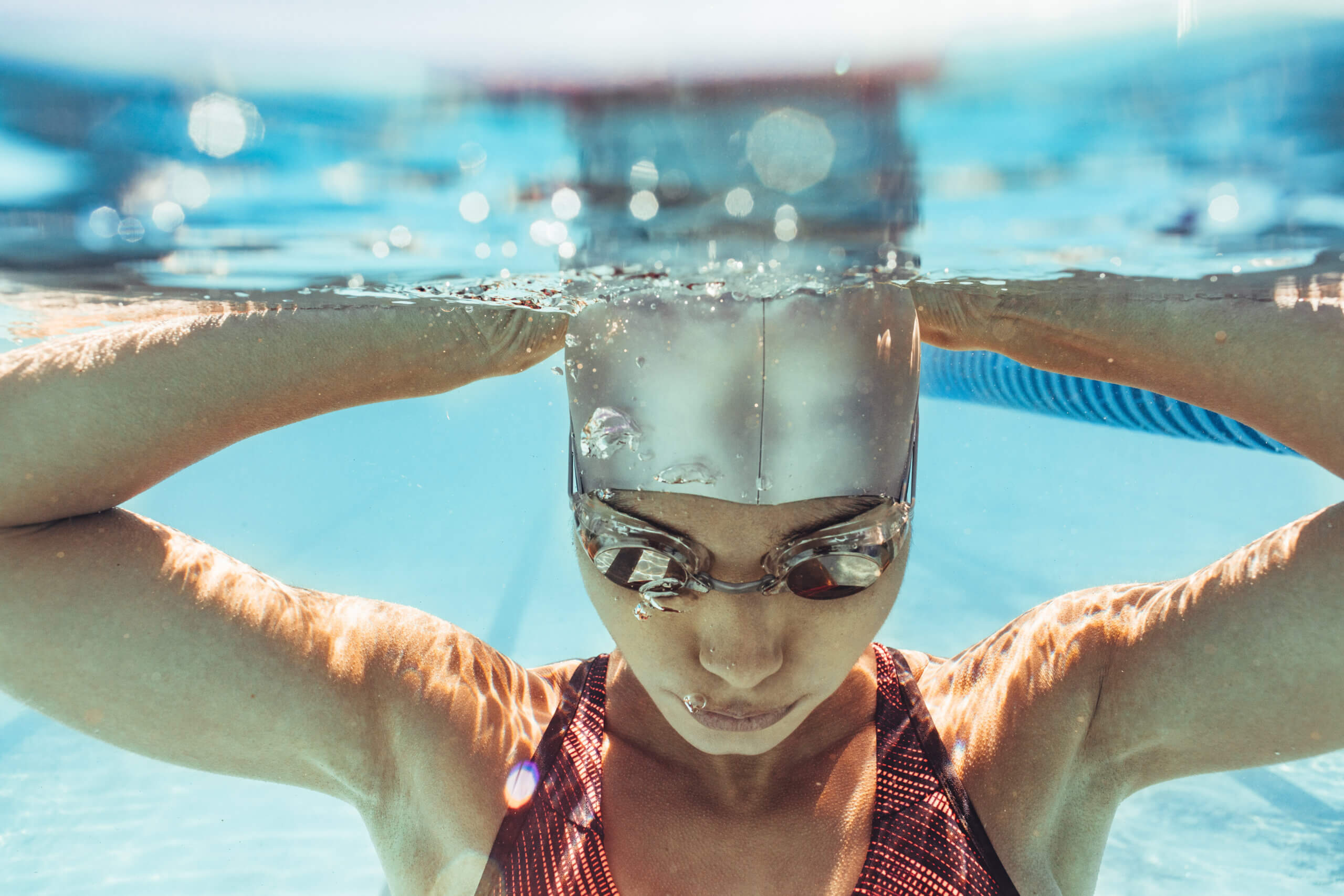
With summer just around the corner and recent news that the International Swimming Federation (FINA) World Championships will now be held in July 2023, it’s important to remember the role that plastics play in aquatic activities. Versatile plastic materials are vital to water sports and activities at all levels of competition—including leisure—and make the necessary swimming gear affordable for everyone.
Plastics are a key material for swimming gear
From high-intensity swim competitions and water polo games to synchronized swimming and aquatic classes for the elderly, plastics help keep everyone safe. Plastics used in swimming gear, including goggles, swimsuits, and head caps, protect swimmers from salt and chlorine and ensure participants can perform at their best, no matter the stakes. Swim goggle lenses, made from polycarbonate, are scratch-resistant, lightweight, and outperform goggles made of alternative materials.
For example, diving masks made of tempered glass, do not have anti-fog coatings. Plastic goggles with an anti-fog coating maximizes visual clarity for swimmers while underwater. Polycarbonate goggles also allow those who need a lens prescription to see underwater and minimizes vision distortion. Polycarbonate is also 10 times stronger than alternatives like glass, reducing the need for replacement, and risk of broken or cracked glass. The straps of goggles are also typically made with silicone or rubber, making them easily adjustable for comfort.
Swim caps can also be made from a litany of synthetic plastic fabrics including silicone, latex, rubber and spandex to protect hair and reduce “drag”—the force of water that slows swimmers down as they are moving forward.
High-tech swimsuits are also made from nylon and spandex. Spandex fortifies Speedo’s LZR Racer suit, making it a compressive, water-repellent, and chlorine-resistant option that “reduces drag and provides the most streamlined shape” for both competition and leisure. At the 2009 World Championships, 43 world records were broken and the USA Swimming’s National Team director, Mark Schubert, said the meet “will be remembered as the plastic meet,” because of the materials’ prevalence that day—including the predominantly polyurethane bodysuits donned by participants.
Plastics improve the functionality of aquatic facilities
In addition to improving safety, plastic is vital to the functionality and design of private pools and public aquatic facilities. Plastic is the easy choice for architects and engineers because the material meets specific requirements needed to plan and build indoor and outdoor swimming areas. Even within a public or competitive pool, plastic lane dividers are vital to keep multiple swimmers in a pool safe and separate so they avoid bumping into each other and stay in their lane.
For both commercial and private installations, plastic pumps, valves and filters are all made with plastic materials that make installation and maintenance easier. Plastic hardware also does not rust, so it can survive outside in any weather, indefinitely. Since plastics are so low-maintenance, scratch, chlorine and UV-resistant, they are the most suitable material for outdoor use in pool covers, pool wall paneling and seats and benches around pool areas. The use of plastic in these applications reduces maintenance needs and, ultimately, lowers costs for local governments, businesses and consumers.
Plastics increases the affordability and access to aquatic activities
From the Olympics to backyard fun, plastics help make water sports and activities more affordable and accessible for all who want to partake. Even more, plastics can improve pool installation quality and consistently outperforms alternative materials. For example, in above ground pools, plastic resin does not rust, corrode or warp surfaces due to sunlight and water damage. Resin frame pools can last up to ten years and cost as little as $750 on average, making summer fun in the water an affordable possibility.
Plastics are also critical for people with disabilities to access aquatic facilities. Various types of plastics are used to manufacture aquatic chair lifts, or pool lifts, which are used to help people with mobility difficulties enter or exit a swimming pool, and are ADA compliant for both residential and commercial use. Once in water, children and adults with disabilities can also use flotation devices including floaties, sectional rafts, or adapted life jackets to help them stay safe. For the elderly, plastic devices like snorkels can be used to help avoid neck injuries from side breathing and plastic fins can support easier swimming.
With plastics, we can all enjoy a safe and fun summer in the water.